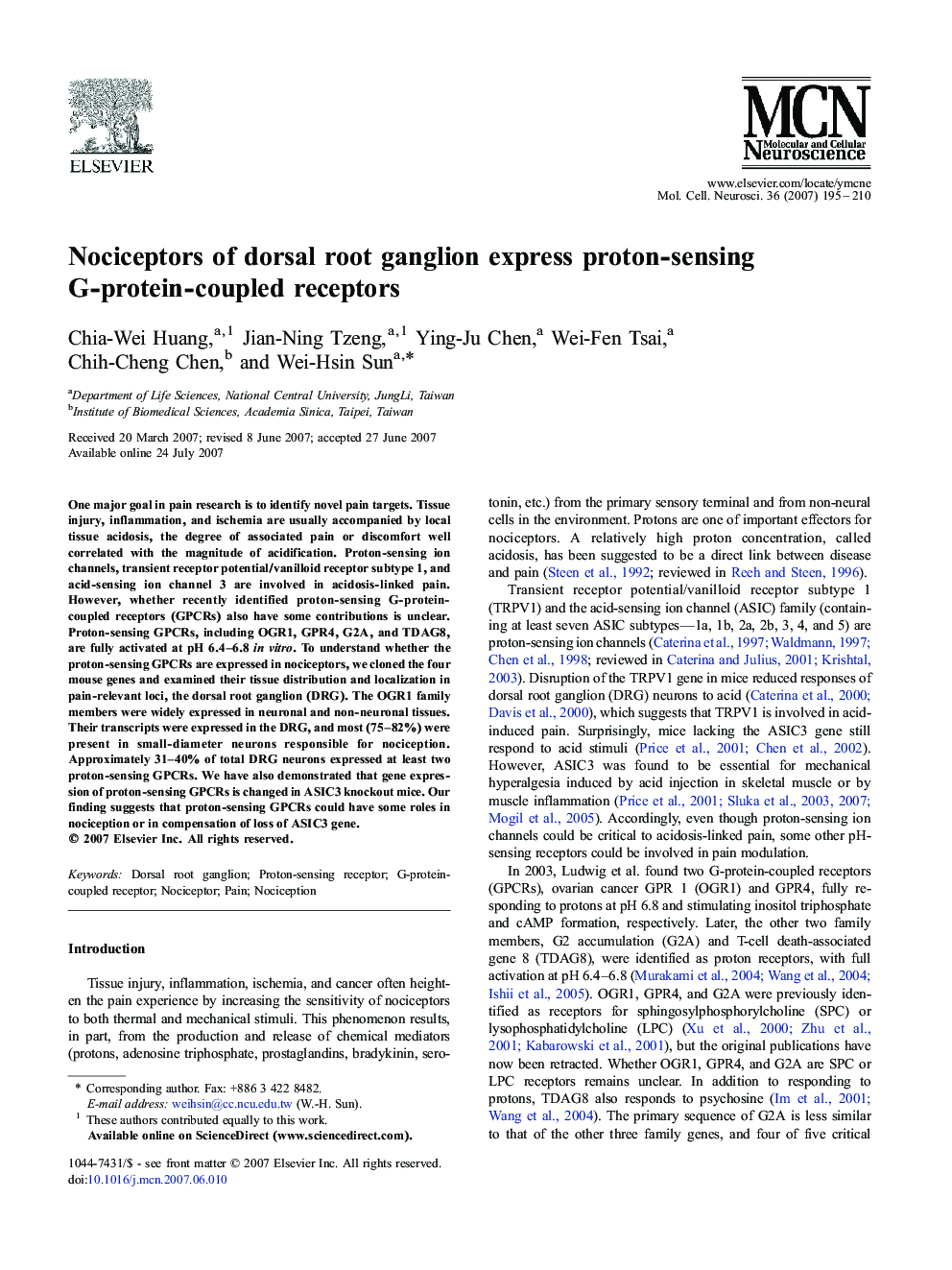| کد مقاله | کد نشریه | سال انتشار | مقاله انگلیسی | نسخه تمام متن |
|---|---|---|---|---|
| 2199206 | 1099431 | 2007 | 16 صفحه PDF | دانلود رایگان |

One major goal in pain research is to identify novel pain targets. Tissue injury, inflammation, and ischemia are usually accompanied by local tissue acidosis, the degree of associated pain or discomfort well correlated with the magnitude of acidification. Proton-sensing ion channels, transient receptor potential/vanilloid receptor subtype 1, and acid-sensing ion channel 3 are involved in acidosis-linked pain. However, whether recently identified proton-sensing G-protein-coupled receptors (GPCRs) also have some contributions is unclear. Proton-sensing GPCRs, including OGR1, GPR4, G2A, and TDAG8, are fully activated at pH 6.4–6.8 in vitro. To understand whether the proton-sensing GPCRs are expressed in nociceptors, we cloned the four mouse genes and examined their tissue distribution and localization in pain-relevant loci, the dorsal root ganglion (DRG). The OGR1 family members were widely expressed in neuronal and non-neuronal tissues. Their transcripts were expressed in the DRG, and most (75–82%) were present in small-diameter neurons responsible for nociception. Approximately 31–40% of total DRG neurons expressed at least two proton-sensing GPCRs. We have also demonstrated that gene expression of proton-sensing GPCRs is changed in ASIC3 knockout mice. Our finding suggests that proton-sensing GPCRs could have some roles in nociception or in compensation of loss of ASIC3 gene.
Journal: Molecular and Cellular Neuroscience - Volume 36, Issue 2, October 2007, Pages 195–210